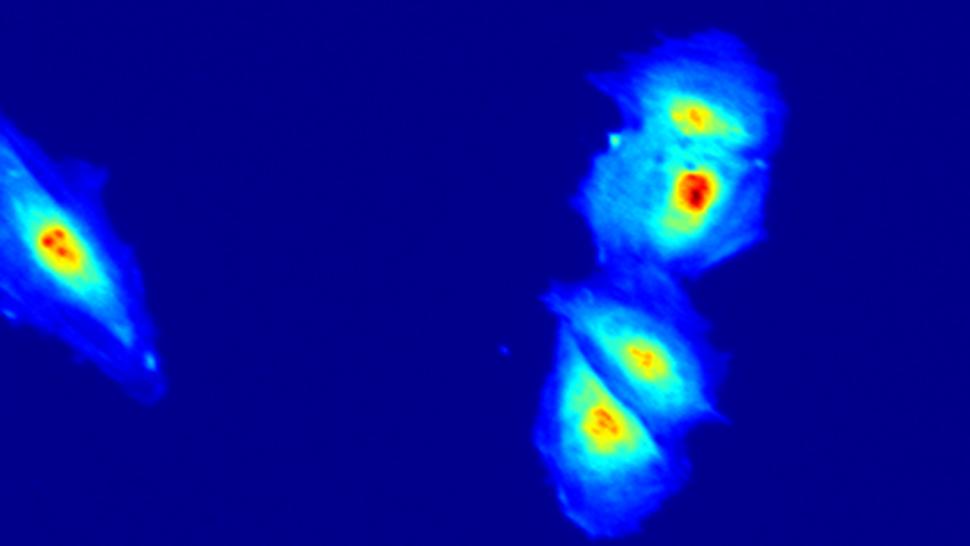Tekstura obrazu jest bogatym źródłem informacji o obiektach widocznych w obrazie. Dotyczy to zwłaszcza obrazów biomedycznych. Obrazy otrzymane za pomocą różnych metod obrazowania medycznego zawierają tekstury, które reprezentują właściwości obrazowanych narządów i tkanek. Parametry tekstury odzwierciedlają właściwości fizjologiczne takich struktur. Analiza tekstury umożliwia także między innymi segmentację narządów, wykrywanie zmian patologicznych czy ocenę ich stopnia. Znaczenie analizy tekstur dla wspomaganej diagnostyki obrazowej wykazano dla praktycznie wszystkich stosowanych w diagnostyce rodzajów obrazowania, w tym tomografii komputerowej (CT) [1], tomografii rezonansu magnetycznego (MRI) [2], ultrasonografii (USG) [3] oraz obrazowaniu optycznym [ 4].
Many textures show some anisotropy. Image intensity or color patterns are aligned and have clear orientations in 2D space. Texture direction analysis finds many biomedical applications. We are conducting research in order to develop accurate methods for detection of textural directionality. Main contributor is Marcin Kociołek.
In cooperation with scientists from many research institutions and physicians, we conduct research on various applications of image texture analysis in supporting medical imaging diagnostics. Main contributors are Piotr Szczypiński, Michał Strzelecki, Artur Klepaczko and Marcin Kociołek.
- Development of qMazda software for texture based image analysis (publications under items 4 and 5).
- Series of papers concerning the impact of image normalization and intensity resolution on classification utilizing texture based features (publications under items 1 to 3).
- GLCM based method for image directionality estimation (publication under item 6).
- Application of texture based image analysis in various areas as: food quality recognition (publications under items 7 to 10).
- Method for assessing the quality of MRI images based on texture analysis [R. Obuchowicz, A. Piórkowski, A. Urbanik, M. Strzelecki, Influence of Acquisition Time on MR Image Quality Estimated with Nonparametric Measures Based on Texture Features, BioMed Research International, 2019, https://doi.org/10.1155/2019/3706581]
We are currently working on developing image texture analysis methods and in cooperation with specialists from other fields we find new applications of these methods. Our contribution to the development of computer-aided diagnosis is of particular importance here. Our competences and knowledge in the field of texture analysis allow to build software tools for solving many research problems.
[1] M. Strzelecki, M. Kociołek, and A. Materka, “On the Influence of Image Features Wordlength Reduction on Texture Classification,” in International Conference on Information Technologies in Biomedicine, 2018, pp. 15–26.
[2] M. Kociolek, M. Strzelecki, and S. Szymajda, “On the influence of the image normalization scheme on texture classification accuracy,” in 2018 Signal Processing: Algorithms, Architectures, Arrangements, and Applications (SPA), 2018, pp. 152–157.
[3] “Does image normalization and intensity resolution impact texture classification? - ScienceDirect” [Online].
Available: https://www.sciencedirect.com/science/article/pii/S0895611120300197. [Accessed: 07-Jul-2020].
[4] P. M. Szczypiński, A. Klepaczko, and M. Kociołek, “QMaZda—Software tools for image analysis and pattern recognition,” in Signal Processing: Algorithms, Architectures, Arrangements, and Applications (SPA), 2017, 2017, pp. 217–221.
[5] P. M. Szczypiński, “qmazda manual,” 2018. [Online]. Available: https://qmazda.p.lodz.pl/pms/Programy/qmazda.pdf.
[6] M. Kociolek, P. Bajcsy, M. Brady, and A. Cardone, “Interpolation-based gray-level co-occurrence matrix computation for texture directionality estimation,” in Signal Processing - Algorithms, Architectures, Arrangements, and Applications Conference Proceedings, SPA, 2018, vol. 2018-September, pp. 146–151.
[7] P. M. Szczypiński, A. Klepaczko, and M. Kociołek, “Barley defects identification,” in Image and Signal Processing and Analysis (ISPA), 2017 10th International Symposium on, 2017, pp. 216–219.
[8] P. Zapotoczny, P. M. Szczypiński, and T. Daszkiewicz, “Evaluation of the quality of cold meats by computer-assisted image analysis,” LWT-Food Sci. Technol., vol. 67, pp. 37–49, 2016.
[9] P. M. Szczypiński, A. Klepaczko, and P. Zapotoczny, “Identifying barley varieties by computer vision,” Comput. Electron. Agric., vol. 110, pp. 1–8, 2015.
[10] P. M. Szczypiński and P. Zapotoczny, “Computer vision algorithm for barley kernel identification, orientation estimation and surface structure assessment,” Comput. Electron. Agric., vol. 87, pp. 32–38, 2012.
- Prof. Michał Strzelecki, e-mail: michal.strzelecki@p.lodz.pl
- Prof. Piotr Szczypiński, e-mail: piotr.szczypinski@p.lodz.pl
- Dr. Marcin Kociołek, e-mail: marcin.kociolek@p.lodz.pl
